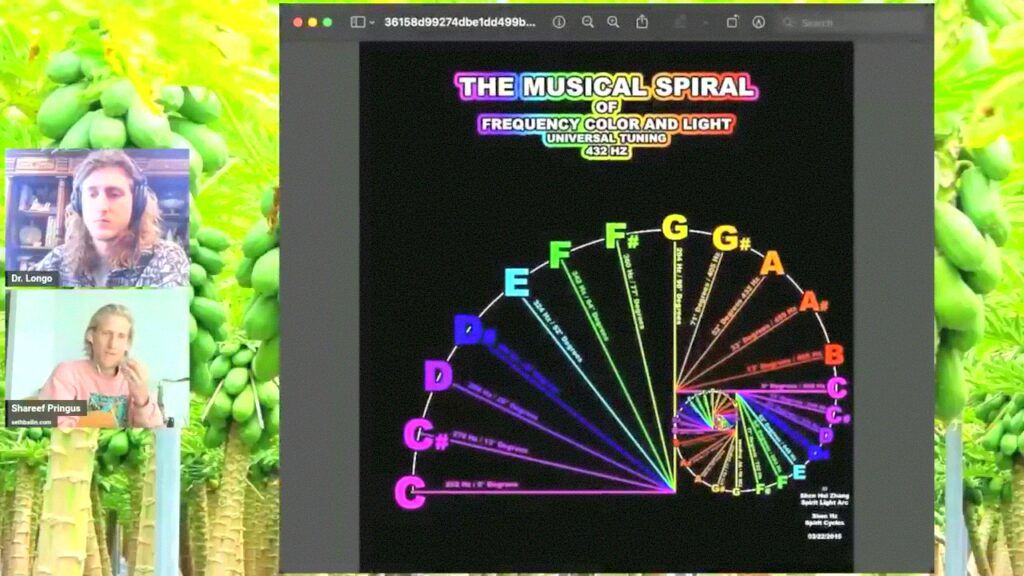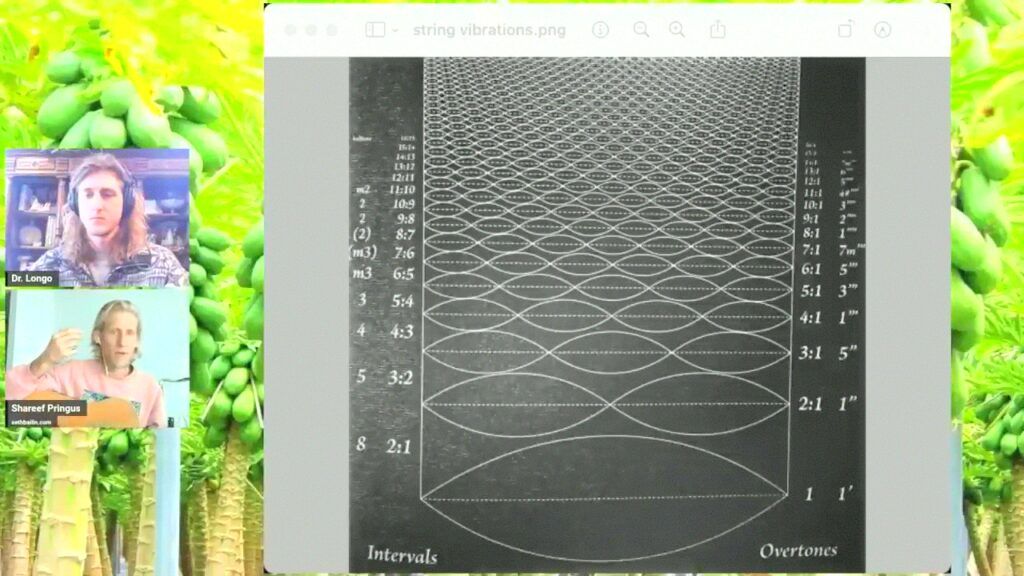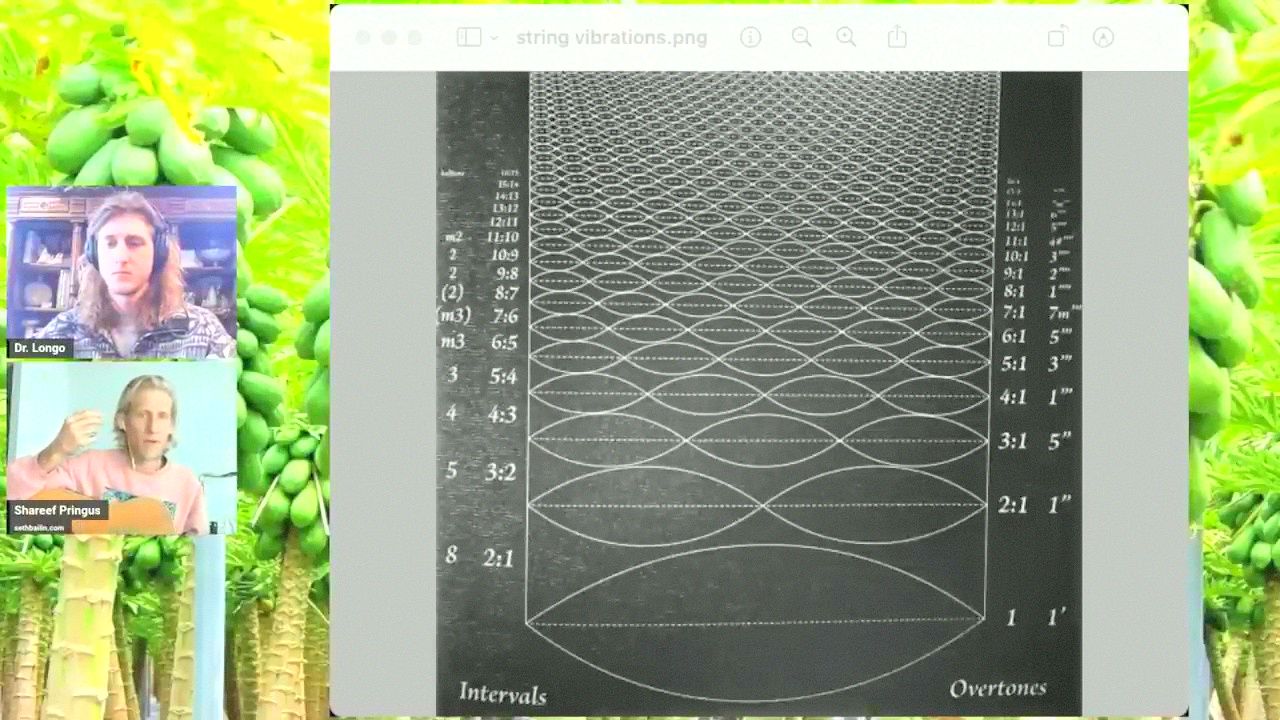Music Theory Magick Harmony 432 Hz – Shareef Pringus
“There’s a guy that did a Ted Talk on metal heads showing their capacity to better integrate feelings of rage and anger. They get that release in the music. So when you spoke of the darker fairy tales that came to mind. Metal music I believe assists in the integration of the shadow. They’re able to rebound quicker. Most metal heads are the most laid back and friendly people. Probably because they’ve learned to release negativity quickly and effectively. Fascinating topic.”
https://www.youtube.com/watch?v=3v1zKRnF-2o
“I play all the music with my band in 444hz, tried 432hz but found it lacked the brightness on the electric guitar that I liked in the music I’d written in 440hz.”
“Acoustic strings generally have brass or bronze coatings, while electric guitar strings generally have steel or nickel coatings. A “string” stop-ring is a coil wrapped core – no swivel at the ends, they are fixed, pinched down at one end and coil twist tightened at the other. Vortexes spun off the motions. Cyclical analysis = circular. A circle is an ellipse with the two foci overlapping. A “circle/spiral” of fifths is a cone. Certain cones fit heads. Coneheads.”
“Because the strings are spun one way or the other, the coils are so, also; therefore, playing up-stroke or down-stroke Must sound different.”
“45:55 I’m not surprised that the inverse of 432 applied to spherical geometry results in a triple 6. For some reason that I cannot defend. Those “sacred” numbers seem to be intentionally embedded in heliocentric cosmology. The Moon and Sun diameters 2,160 and 8,640,000 miles.”
“100% of cosmology is Jesuit creation. All still theory. Fixed Polaris polestar and night time time-lapse photography prove all motion except circular, like a flat rotating disk, is unobservable and therefore more likely than not to be false. Supposed “tilt of earth axis” is 23.4 degrees. 90 minus 23.4 is 66.6 Their hallmarks are everywhere for those with knowledge to understand.”
“…pianos made before 1939and before can be tuned to 432 after they changed the tuning pin block and harp for 440 ,so if you try and tune to 432 not all keys will sound right.”
“Natl Bureau Standards [NIST] been busy, redefining all base units — instead of meter stick that can be touched, measured, it’s now the number of vibrations per sec of cesium-137. Same relation for weight, same for time. They have made everything circular and removed from physical reality. Now that this tiuseJ influenced institution has corrupted the base units by making them relative, you can count of future disruption and evil.”
“I know taste in music is subjective but you cant tell me that most modern music doesnt suck. For whatever reasons”
“Reasons — AUTO TUNE — “DYNAMIC COMPRESSION” (no difference between whispering and screaming, allllll is “maximized”) — LYRICAL IDIOCITY — DIGITALIA that insists sampled “fill in” somehow replaces infinity of natural analog. EVIL INTENT now well-documented in the insane “industry”.”
“The second is arbitrary. Its got absolutely nothing to do with the sun. 60 by 60 by 24 is arbitrary. Just like how 360 degrees in a circle is arbitrary. // In Jesuit cosmology, theorized “tilt of earth axis” is 23.4 degrees. 90 minus 23.4 is 66.6 // Time, language, calendar alllll deeply church-influenced. GEMATRIA EFFECT NEWS channel covers this, and the resulting matrix, incredibly.”
“All solfeggio frequencies add to 3 6 9…”
“Tune to 420 u resolve the static“
“The over tone makes the instrument sound like itself,if you take the overtone away all sounds ,sound the same a very boring world.” —– “Not exactly. It is the “timbre” that defines WHAT an instrument “sounds like”; timbre is the hodge-podge of base frequencies. Any overtones (harmonics) of these frequencies (and ‘beat tones’) are attributed to “liveliness” or “deadness”; it is why all perfect sine waves utterly lack “shimmer”. Interesting that, therefore by definition, “shimmer” and “liveliness” are actually impurities added to any base. Many studies confirm this; verify via google scholar search on “timbre” and “instrument tonal character”.”
“DR HANS UTTER youtubes with JAN IRVIN / LOGOS MEDIA are similarly excellent and along these lines. See also BURN-EYE and AUTO DIDACTIC youtubers, all similar.”
“The bigger les biologically watered-down nethelim had 6 fingers and probably used base 12 for counting.” —– “…and two rows of teeth, the more to eat half-lings with…”
“The second is arbitrary. Its got absolutely nothing to do with the sun. 60 by 60 by 24 is arbitrary. Just like how 360 degrees in a circle is arbitrary.” —– “In Jesuit cosmology, theorized “tilt of earth axis” is 23.4 degrees. 90 minus 23.4 is 66.6″ —– “Time, language, calendar alllll deeply church-influenced. GEMATRIA EFFECT NEWS channel covers this, and the resulting matrix, incredibly.”
Base Units & Uniteers
Definition of base units in physics, the history of time measurement, the role of specific isotopes like cesium-137 in timekeeping, and the involvement of institutions like NIST (National Institute of Standards and Technology), as well as the historical contributions of the Jesuits and the Vatican to science.
Base Units in Physics
The International System of Units (SI) defines seven base units from which all other units of measurement are derived. These base units are the meter (length), kilogram (mass), second (time), ampere (electric current), kelvin (thermodynamic temperature), mole (amount of substance), and candela (luminous intensity).
The Second and Time Measurement
The second, the base unit of time in the SI system, has evolved in its definition. Initially, it was defined based on the Earth’s rotation and then the Earth’s orbit around the Sun. Since 1967, the second has been defined as the duration of 9,192,631,770 periods of the radiation corresponding to the transition between two hyperfine levels of the ground state of the cesium-133 atom.
Pendulum
Before the advent of atomic clocks, pendulums were a primary method for keeping time accurately in mechanical clocks. The length of a pendulum with a half-period of one second (known as a “seconds pendulum”) was historically significant in defining the meter. However, due to variations in gravity across the Earth, this method was not universally reliable for defining a base unit.
Cesium-137 and Atomic Clocks
Cesium-133, not cesium-137 (which is a radioactive isotope used in medical applications and industrial gauges), is used in atomic clocks. Cesium atomic clocks operate by measuring the microwave signals that electrons in cesium atoms emit when they change energy levels. The precision of these clocks has been fundamental in defining the second and in applications requiring precise timekeeping, such as GPS.
NIST (NBS)
The National Institute of Standards and Technology (NIST), an agency of the U.S. Department of Commerce, is involved in the development and maintenance of standards, including timekeeping. NIST operates atomic clocks and contributes to the international time standards that ensure consistency in timekeeping worldwide.
Jesuits, the Vatican, and Science
The Jesuits and the Vatican have a long history of involvement in scientific inquiry. The Jesuit order, in particular, has produced many notable scientists who have contributed to various fields, including astronomy, physics, and mathematics, especially during the Renaissance and Enlightenment periods. The Vatican Observatory, one of the oldest astronomical research institutions, reflects the Catholic Church’s commitment to understanding the universe, demonstrating that religious institutions have played a significant role in the advancement of scientific knowledge.
Connecting These Topics
While seemingly disparate, these topics are connected through the evolution of scientific understanding and measurement. The development of precise timekeeping methods, from pendulum clocks to atomic clocks, illustrates the progress of physics and technology. Institutions like NIST, along with contributions from various historical and contemporary figures, including members of religious orders like the Jesuits, highlight the collaborative nature of scientific advancement. The commitment to refining the definitions of base units, such as the second, underscores the ongoing quest for accuracy and consistency in science.


